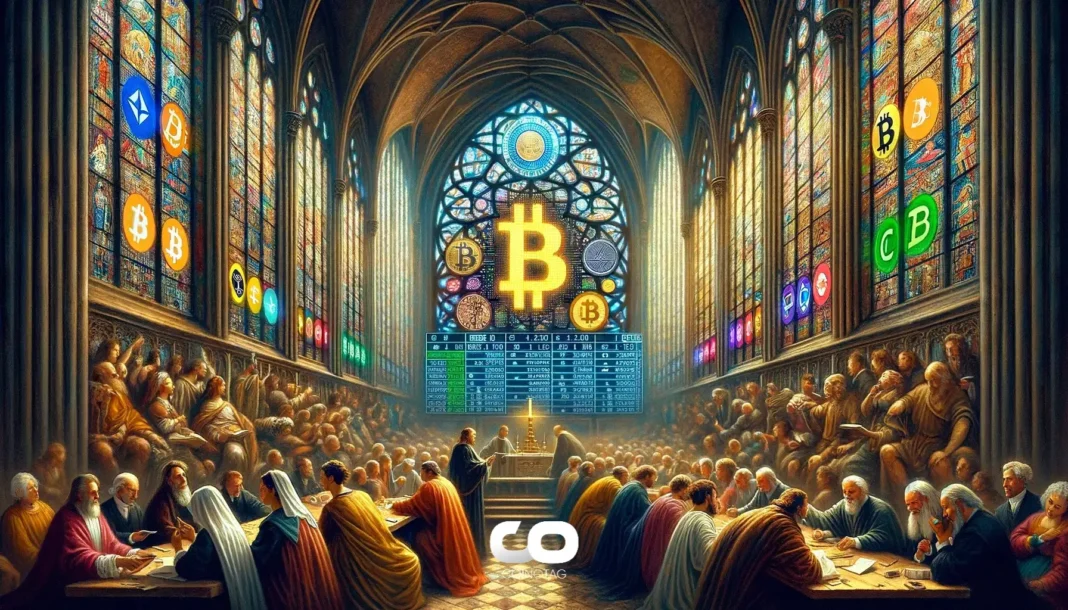-
President Trump’s recent announcement to double tariffs on steel and aluminum imports marks a pivotal shift in U.S. trade policy, aiming to strengthen the domestic steel industry amid global market pressures.
-
The new 50% tariffs, effective June 5, 2025, are expected to impact international trade dynamics and could lead to increased costs for import-dependent sectors across the U.S. economy.
-
According to COINOTAG sources, this tariff hike is a strategic move to counteract international pricing pressures and bolster U.S. industry competitiveness in the steel sector.
President Trump’s 50% tariff increase on steel and aluminum imports aims to protect U.S. industries, potentially affecting global markets and domestic pricing from June 2025.
Trump’s 50% Tariff Increase: A Strategic Move to Protect U.S. Steel Industry
In a significant policy announcement at a rally in Pittsburgh, President Donald Trump declared that tariffs on steel and aluminum imports will rise from 25% to 50%, effective June 5, 2025. This decision is designed to fortify the domestic steel industry by making imported steel and aluminum more expensive, thereby encouraging consumption of U.S.-produced materials. The administration’s objective is to mitigate the impact of international competitors who have been undercutting U.S. producers through lower pricing.
This tariff escalation reflects a broader trade strategy aimed at enhancing American manufacturing resilience. By imposing higher tariffs, the government seeks to reduce reliance on foreign steel and aluminum, which could lead to increased production and job growth within the domestic sector. However, this move also raises concerns about potential cost increases for industries reliant on these raw materials, such as automotive and construction, which may pass these costs onto consumers.
Implications for Global Markets and U.S. Importers
The doubling of tariffs is likely to reverberate through global steel markets, tightening supply chains and potentially driving up prices worldwide. Importers in the U.S. will face higher costs, which could translate into inflationary pressures across multiple sectors. Analysts note that while the tariffs aim to protect domestic producers, they may also provoke retaliatory measures from trade partners, complicating international relations.
Historical precedents, such as the 2018 steel tariffs, showed an immediate spike in domestic steel prices and a temporary boost in U.S. steel producers’ stock valuations. However, these benefits were balanced by increased input costs for manufacturers and heightened trade tensions. Industry experts emphasize the importance of diplomatic engagement to manage these risks and avoid prolonged trade disputes.
Historical Context and Market Reactions to Tariff Adjustments
Tariffs have long been used as tools to shield domestic industries from foreign competition. The 2018 steel and aluminum tariffs serve as a relevant benchmark, where initial price increases helped U.S. producers but also led to broader economic ripple effects. Market participants are closely monitoring the current announcement, anticipating similar short-term price volatility.
COINOTAG analysts highlight that while the tariff hike may bolster the steel sector’s short-term profitability, the overall impact on the U.S. economy depends on how downstream industries adapt. Increased raw material costs could suppress demand or accelerate innovation in alternative materials. Regulatory bodies are expected to oversee the unfolding trade dynamics to balance industry protection with economic stability.
Potential Impact on Cryptocurrency and Financial Markets
Interestingly, the announcement has also drawn attention from cryptocurrency markets, where investors are evaluating the broader economic implications. Trade policy shifts can influence market sentiment, affecting risk appetite and capital flows. Some analysts suggest that heightened geopolitical tensions and inflation concerns may drive increased interest in decentralized assets as hedges against traditional market volatility.
While the direct correlation between steel tariffs and crypto markets remains complex, the evolving trade environment underscores the importance of diversified investment strategies. Financial experts recommend that investors stay informed about macroeconomic developments, including trade policies, to navigate potential market fluctuations effectively.
Conclusion
President Trump’s decision to increase steel and aluminum tariffs to 50% represents a decisive effort to protect and strengthen the U.S. steel industry amid global competition. While this move is poised to benefit domestic producers, it also introduces challenges for importers and downstream industries, with potential ripple effects on pricing and inflation. Market observers should watch for international responses and evolving trade negotiations, as these will shape the long-term impact on both the U.S. economy and global markets. Stakeholders are advised to remain vigilant and adaptable as the situation develops.





